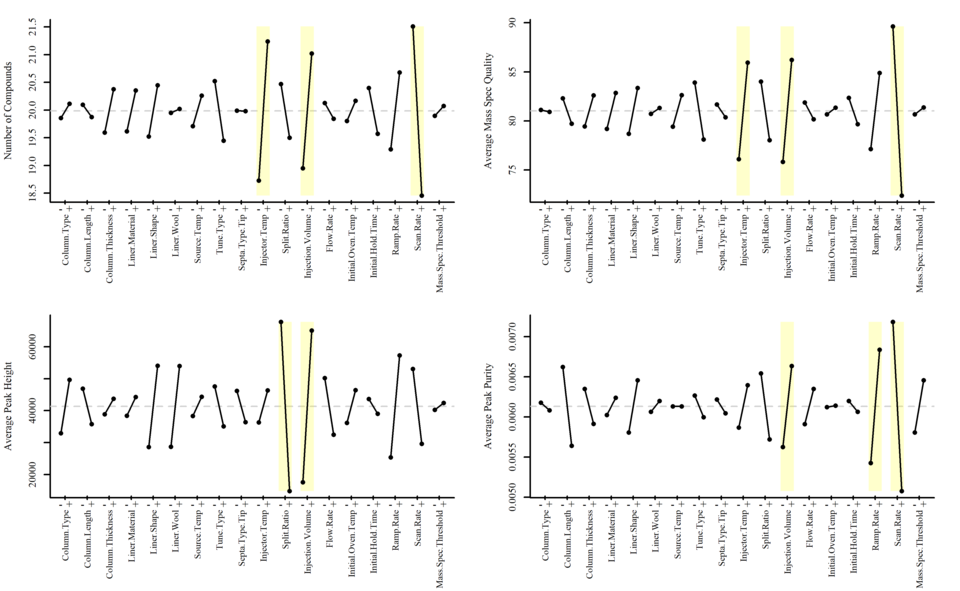Summary
The goal of this focus area is to enhance the measurement science capabilities and address measurement science challenges present in the analysis of fire debris and explosives. This includes the creation of approaches to optimize and validate analytical processes. One of the major challenges this area aims to address is detection of trace homemade explosive residues. Developing a better understanding of how these compounds persist and should be preserved is also a focus.
Description
Fire Debris
Fire debris analysis involves the collection, analysis, and interpretation of data of debris collected from fire scenes. Samples are typically analyzed by gas chromatography mass spectrometry which results in a complicated chromatogram that must be interpreted. Projects in this area are focused on developing the approaches to ensure the optimal analytical data can be obtained for these complex samples. Efforts in this area include:
Developing a Statistical Framework for GC-MS Method Optimization
Defining an objective measure of quality for analytical data is a measurement science problem that is paramount in establishing validity and reliability. Developing objective measures will provide forensic scientists with tangible data to support the use and reliability of their methods and ultimately increase confidence in results. This project aims to provide the community with a data-driven measurement framework for method optimization based on statistical principles, and has the potential to impact all forensic disciplines that utilize analytical tools. This project has the following four key objectives: (1) develop a decision analytic preference model to address quality measure tradeoffs, (2) develop and complete the response surface methodology (RSM) optimization study on in-house instruments, (3) complete RSM optimization study with collaborating forensic laboratories, and (4) compare the quality of the GC-MS output between optimized instrument settings and existing instrument settings. An ignitable liquid test mixture, achieved using a design of experiments study, is shown below.

Determining the Effect of Storage Conditions on the Preservation of Ignitable Liquid Residues
Data is needed to better understand the effects of environmental and storage conditions on ignitable liquid residue samples in order to establish best practices guidelines. This project focuses on determining the effects of storage factors such as: extraction solvent, evaporation, storage temperature, vial cap type, and the use of parafilm and/or vacuum heat-sealed bags.
Explosives
Explosives incorporate a wide range of organic and inorganic compounds that can be extremely volatile (such as with peroxide explosives) or non-volatile (such as with inorganic explosives). Often in forensic analyses only trace amounts of explosive materials remain to be analyzed. Research projects in this area aim to provide forensic scientists with approaches to be able to analyze trace amounts of these compounds as well as provide an understanding on the expected environmental stability of such compounds. Efforts in this area include:
Developing Approaches for the Analysis of Homemade Explosive Compounds
Effective analysis of trace levels of homemade explosive compounds require techniques capable of simultaneously analyzing high volatility and low volatility compounds. Most trace analysis tools are unable to accomplish this because of the inability to achieve the drastic differences in desorption temperatures required. Through this project a number of ambient ionization mass spectrometry approaches have been developed that allow for temperature gradients capable of unlocking detection across this range, including infrared thermal desorption (IRTD)-DART-MS and Joule heating thermal desorption (JHTD-DART-MS). These platforms have been shown to readily analyze the range of explosive compounds as well as black powder, black powder substitutes, and smokeless powders. Other platforms, which do not require thermal desorption of the analyte, are also being investigated.
Measuring the Persistence of Explosive Residues
Achieving successful trace detection of explosives residues requires that explosive particulate is released from a source and settles on the surface of interest and that the residue is then able to persist in the environment until it is collected and analyzed. This project aims to address the question of environmental persistence of these residues. To measure persistence, trace amounts of explosives are exposed to a range of simulated environmental conditions for extended periods of time. Samples are then analyzed using mass spectrometric techniques to both quantify the amount of explosive present and to understand the degradation processes. The project is investigating both traditional and homemade explosives.

